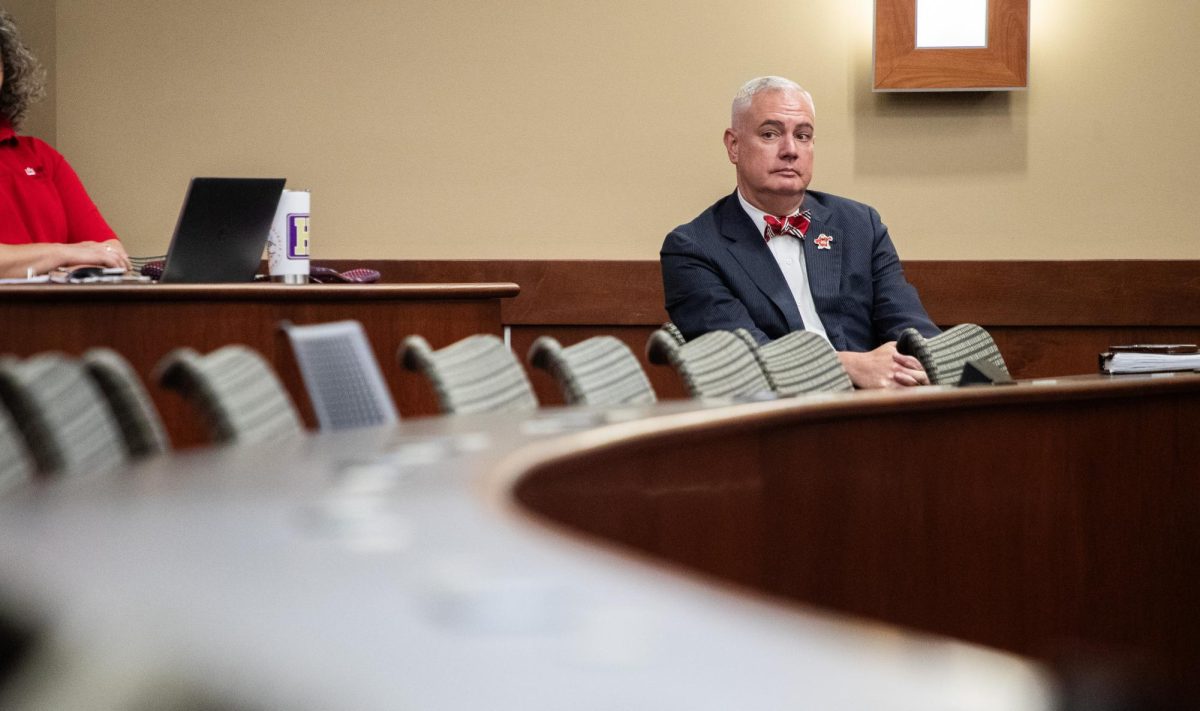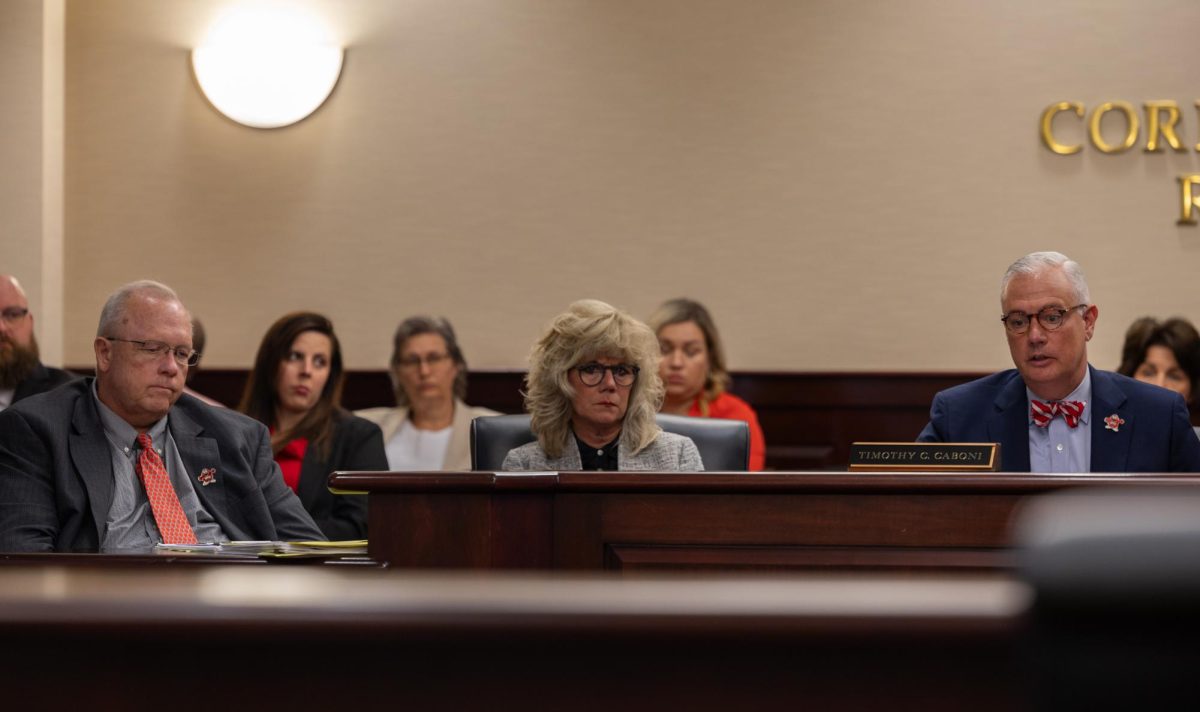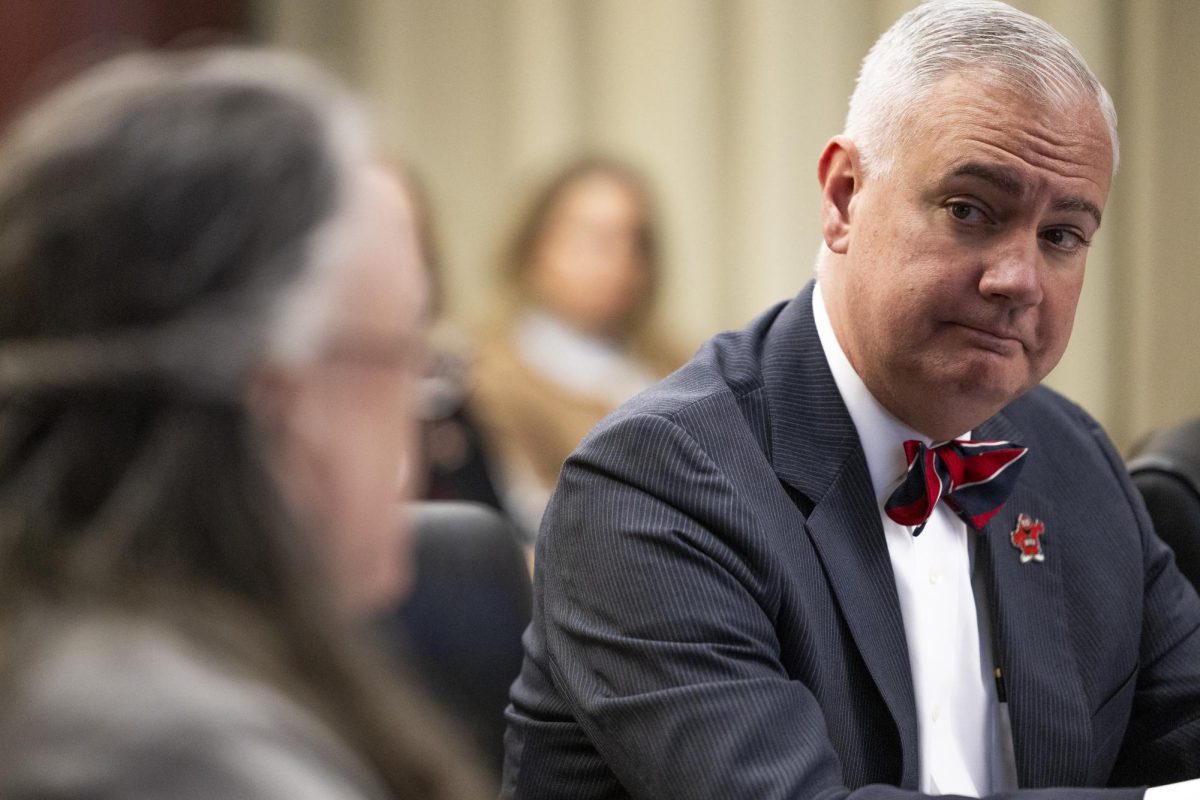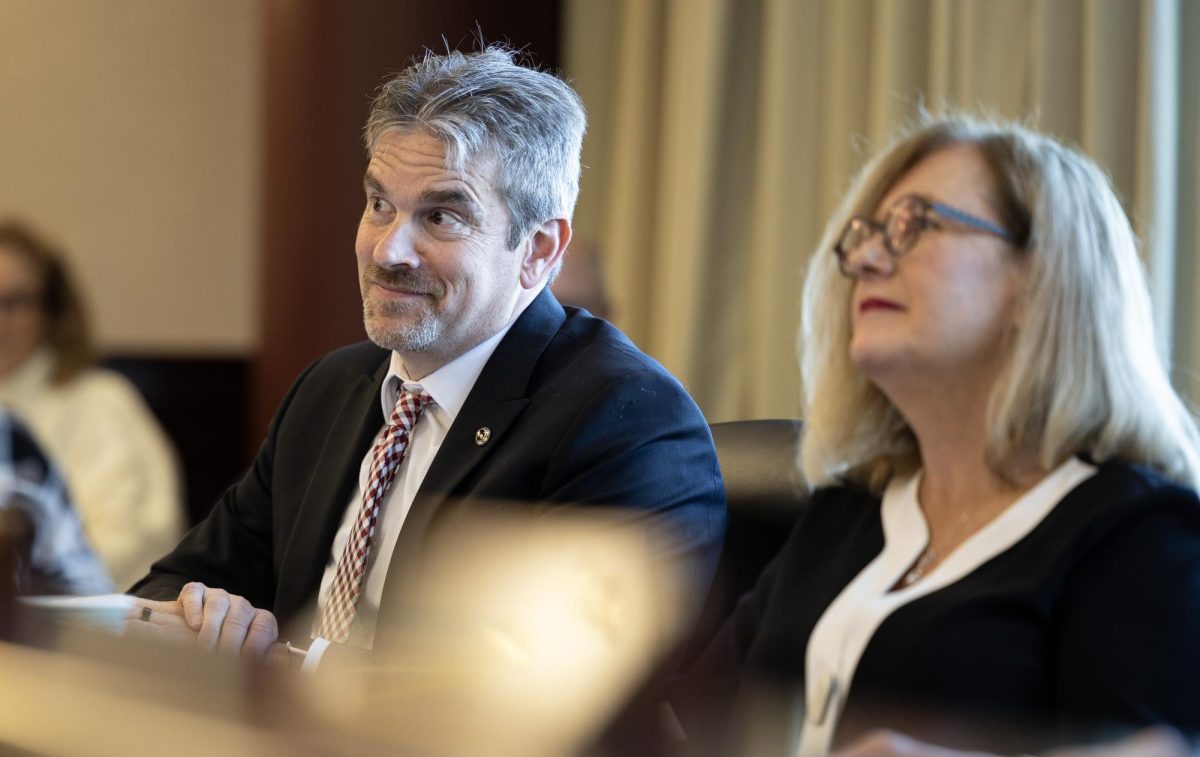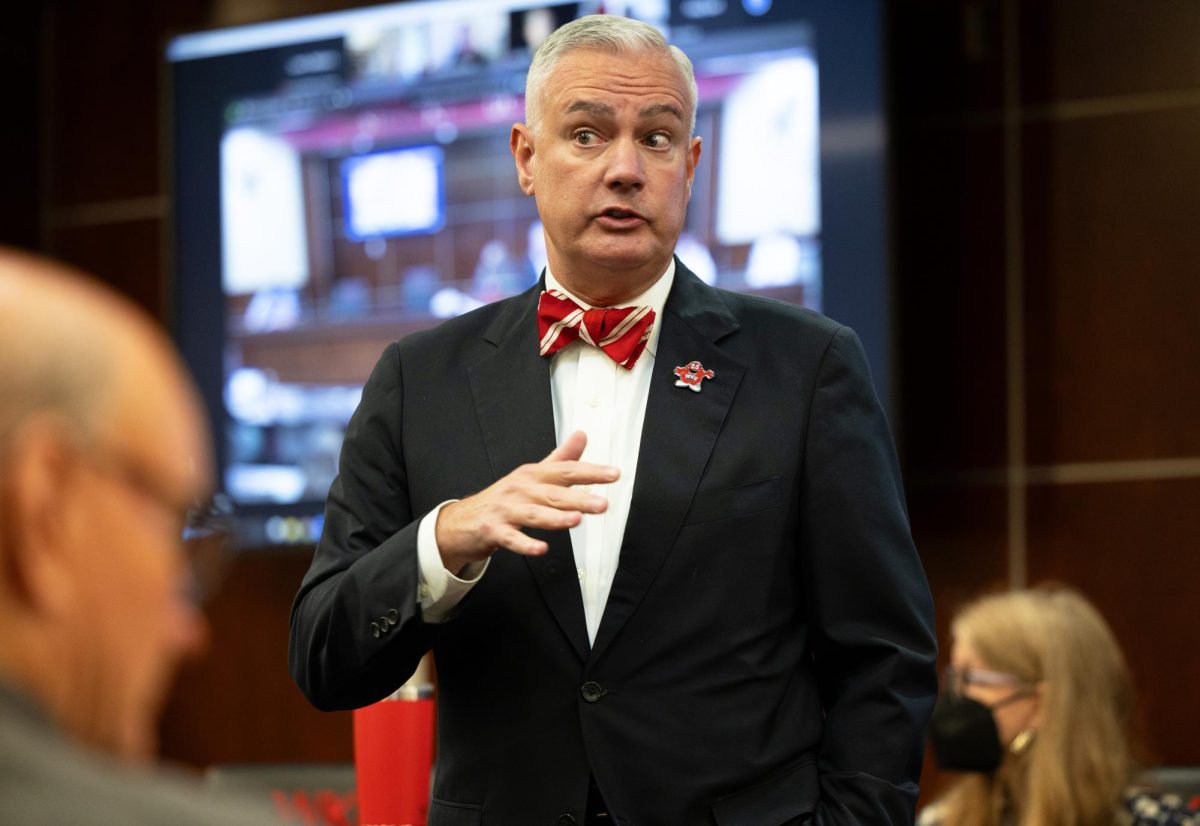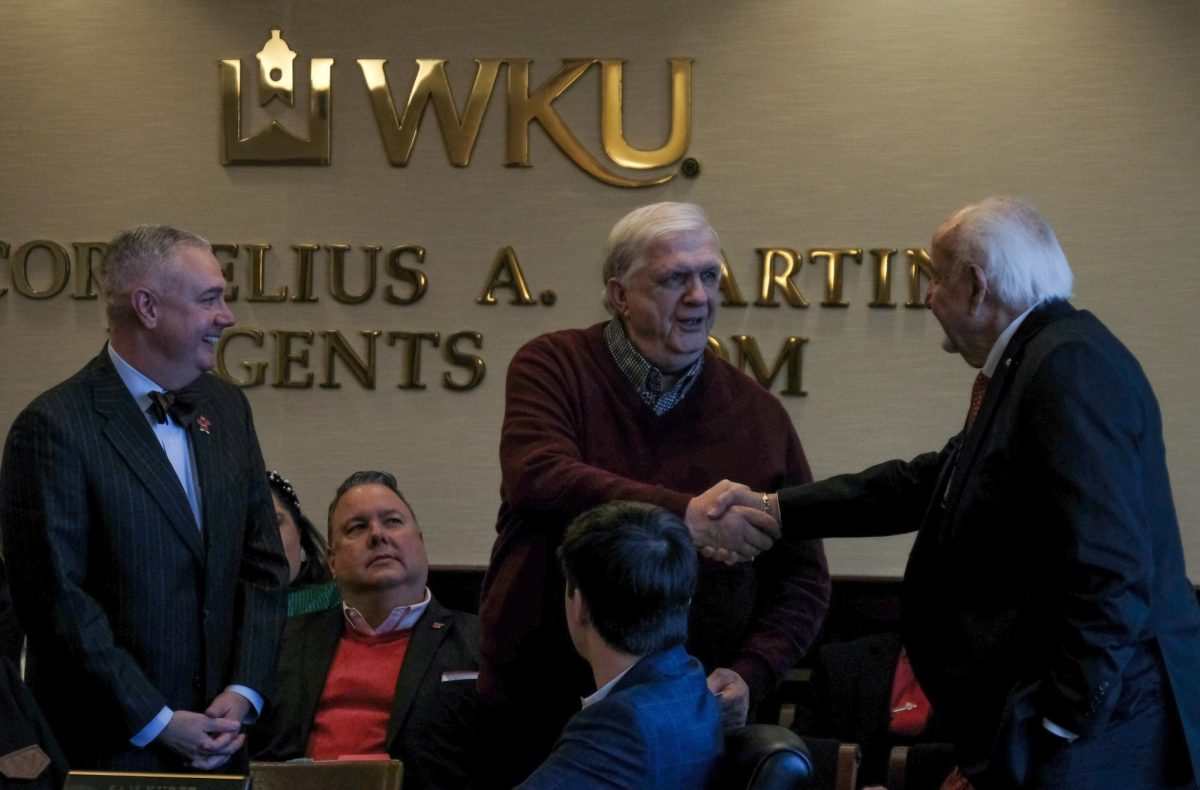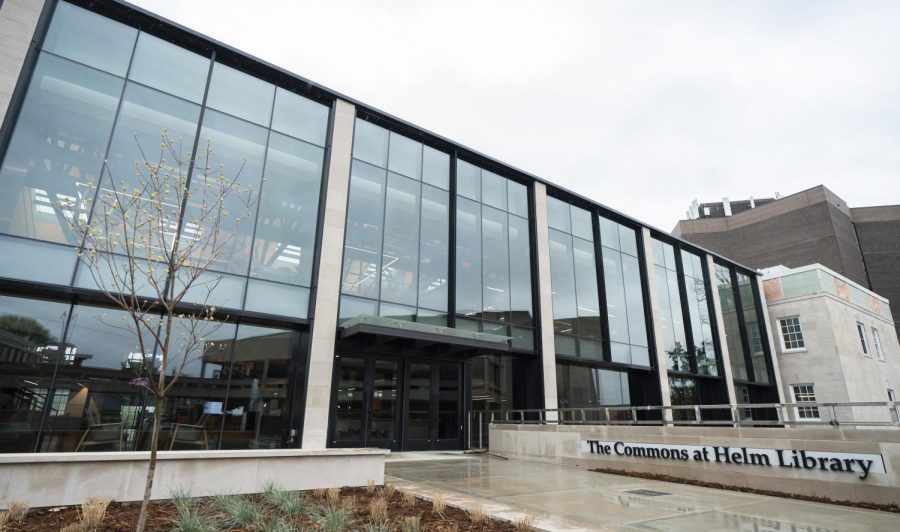Editor’s note: This story was updated with further information detailing the breakdown of the $11 million overspend.
The $11 million gap between WKU revenues and expenses from 2022-23 came primarily from overspending in the athletics and enrollment and student experience divisions, as well as from various one-time payments.
Susan Howarth, WKU executive vice president for strategy, operations and finance, and Renaldo Domoney, WKU assistant vice president for budget, finance and analytics, said fiscal year 2023 saw expenditures of $400.6 million and revenues of $389.6 million. The budget was set for $383.4 million in both areas.
“It’s not a budget problem,” Howarth said. “If we had a budget problem, there would be no carry forward … it’s not a budget problem and he [WKU President Timothy Caboni] continues to say that, it’s an overspend, which is very different than actually having a budget problem.”
The divisions of the university that primarily overspent their given budgets were enrollment and student experience and athletics. Howarth said the overspending from enrollment and student experience, totalling $740k, were specifically tied to additional recruitment events.
“I think it’s important to note that those were authorized events, they are much needed events, it yielded benefits,” Howarth said. “Our enrollments were up, our retention is up. So I think there was return on that investment.”
Athletics, specifically football, exceeded their budget by $1.77 million, Domoney said. Howarth said there are already adjustments for this year, referencing the Ohio State game, which required much less travel and had a much larger guarantee.
“That was directly related to the extra game to Hawaii, where the travel expenses exceeded the guarantee, and that’s what put athletics over slightly,” Howarth said. “ … Athletics has a new budget person they’ve already started tightening up. So you will certainly not see that problem.”
A portion of the $11 million overspend was also due to inflationary costs that were not previously budgeted for, specifically in the facilities and information technology units, Howarth said.
Various one-time payments, including the $950 one-time payments to eligible employees in January and the payment of a $700k lease for a First Year Village restaurant, were also not budgeted for and contributed to the $11 million.
The one-time payments, overspending in the athletics and enrollment divisions and facilities and IT inflationary costs total $8.3 million of the $11 million overspend. Domoney said that the remaining amount, $2.67 million, is attributable to other “unbudgeted campuswide inflationary costs.”
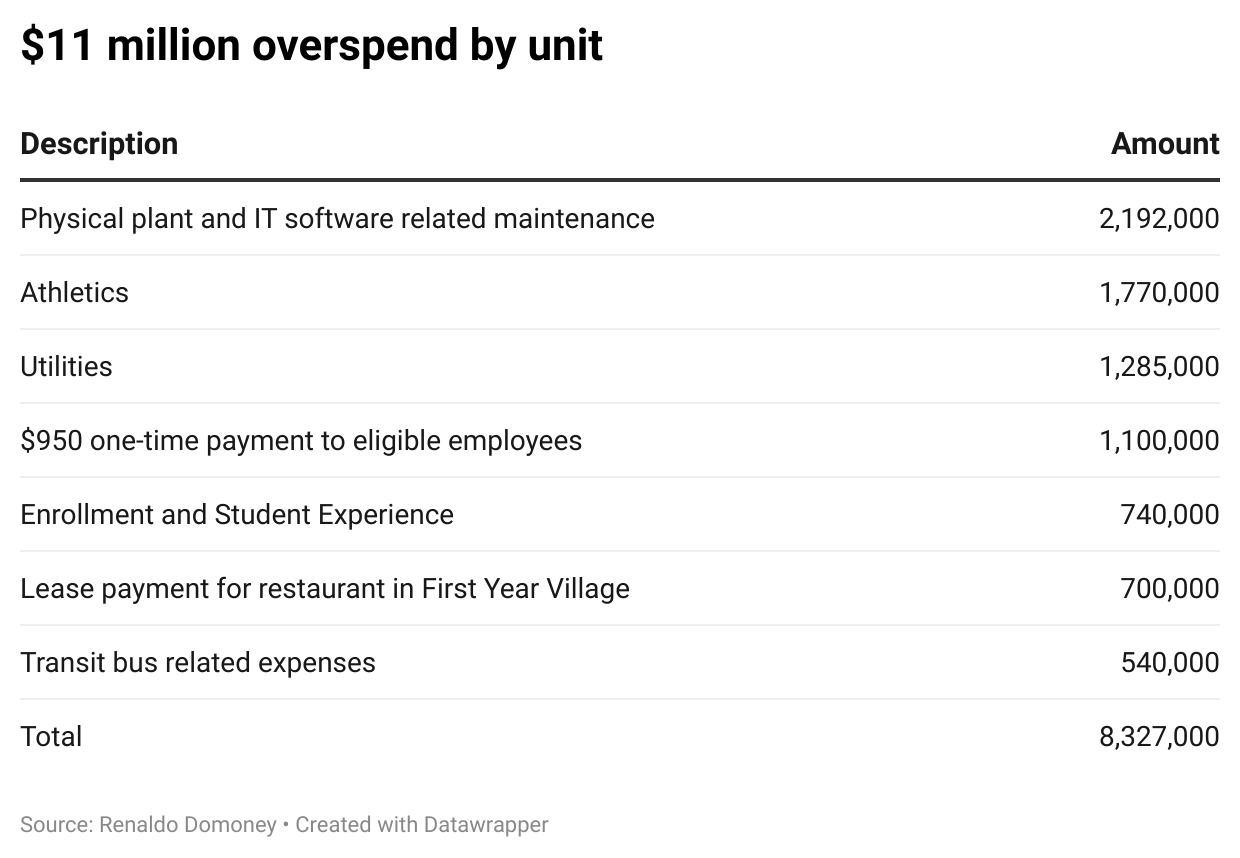
Domoney said the university has taken care of the $11 million overspend, and that it will not be passed on to this fiscal year.
“We’ve basically already taken care of it,” Domoney said. “So we’re not necessarily passing that on to this year or anything. Part of how we did that or how we’re doing it is we always try to take a long term view and not just look at one year in isolation. Since fiscal year 2018 to 2022, we’ve improved in all key financial metrics, and we’re able to absorb that type of a year, which is fine.”
Compared to previous years, which had expenses that were approximately 90-95% of the total budget, FY23 had expenses that were 101.5% of the total budget. Howarth explained that the university is simply returning to how expenses functioned before FY23, which is units operating within 90% of their budgets. This produces carry forward balances, or unexpended balances at the end of the year.

“The good thing is through all the good stewardship over the past six, seven years, is that the university was in a position to absorb a 2.9% overspend, but what we’re doing is to be proactive so that we don’t have this problem this year, so we don’t end the year with the same overspend. We’ve told everyone to operate basically within 90% of their budget.”
Howarth explained that some of the carry forward money from across the university will be held back this fiscal year since the university absorbed the $11 million overspend last fiscal year. She said that limiting the amount of money given back to the units from their carry forwards can prevent further overspend.
“Carry forward is, simply, not revenue,” Howarth said. “It’s cash. The policy states that that money can be held back to cover any type of shortfall. So, yes, the university absorbed it [the $11 million] when everything closed out, but we’re holding back some of everybody’s money … But because of the policy, we need to recognize that there was overspend, so not everybody is going to get everything. It just doesn’t give the units as much spending authority. That’s really all it does. It just holds back some of their spend ability.”
Domoney said that limiting spending this year is one part of the plan to adjust for the overspend, and another piece is seeing success in enrollment from the admissions and recruitment investments made last year. He said unit heads have been given the flexibility to plan with the 92% budget spending range.
With the university’s decentralized budget model, how various units remain in the 90-92% budget spending range will differ based on unit head. For example, a dean of one college may choose to adjust budgets within their unit differently than the dean of another college.
“Our enrollment is up across the board for the first time in a long time, and that helps this year,” Domoney said. “Then we’ve also had these targets that were sent out to the units to give them about that 92% range to plan, and we’re really giving them the flexibility to say these are your targets, and go ahead and do what’s best for your unit.”
Editor-in-chief Alexandria Anderson can be reached at [email protected].



